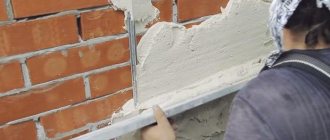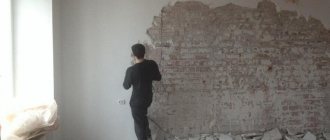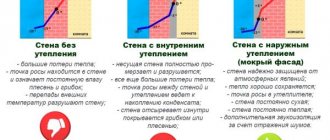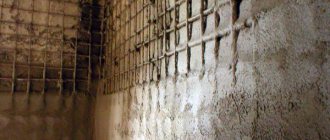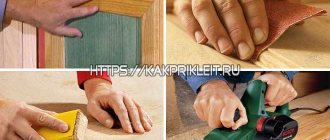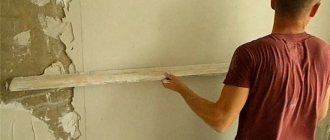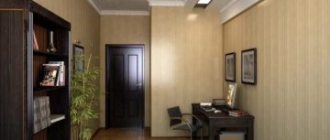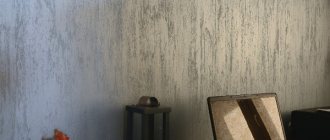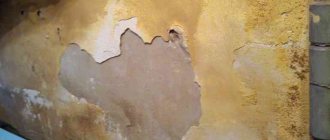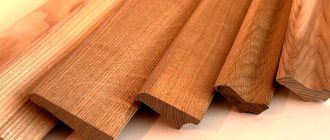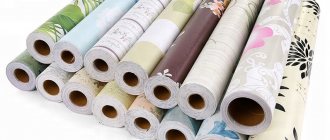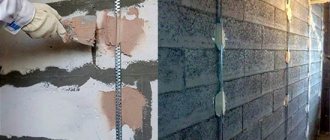Giving preference to brick as one of the most popular building materials, many novice builders forget that in this case, waterproofing of the brick wall is required. It will protect the structure from the accumulation of moisture from inside and outside the building. However, this process is fraught with many subtle points that every master should know about.
Required materials and tools
It is necessary to select materials for waterproofing using an integrated approach. Firstly, it is necessary to understand what type of waterproofing will be used and in what case. Thus, it is much easier to organize the process if the building is at the initial stage of construction, while waterproofing already dilapidated and moisture-damaged brickwork will be much more difficult.
Read how to lay bricks correctly in the article Bricklaying.
The second case will require not only specific equipment, but also special modern building materials that will block the old porous brick from gaining moisture from the outside. Such techniques are used primarily for the resuscitation of architectural monuments, but in domestic conditions, when the attractiveness of the facade and the peculiarities of the masonry can be neglected or hidden behind a pretty decor, relatively inexpensive building materials and affordable tools are quite applicable.
Not every method of waterproofing will be safe for the craftsman, therefore, for example, when working with an open fire, you should use not only the appropriate tools, but also protective equipment - non-flammable clothing.
A classic example of a material for waterproofing is bitumen and all its derivatives, but more modern ones include products based on synthetic resins.
Types of insulating materials
- Coating. To carry out this work, construction mastic is used, made on a bitumen base with the addition of synthetic resin to enhance the adhesive properties of the material. A good alternative to bitumen mastic is its more modern analogue based on an elastic polymer-cement composition. The polymer-cement base includes an artificial dried mixture that dissolves in latex water (one to one ratio). Thanks to this composition, the material has tensile and astringent properties.
- Pasted insulation is the most inexpensive, simple way to waterproof the walls of a house. The adhesive base for walls consists of cardboard and fiberglass, which are impregnated with thick paper. This material is available in three types: roll, sheet, panel base. It is recommended to use the adhesive for external insulation from water.
- Roofing felt can also be considered one of the many ways to protect walls from water, but due to its fragility, it is overly susceptible to mechanical damage and rotting. The advantage of roofing felt is its low cost and quick installation. A more durable material is fiberglass roofing felt, but it costs much more. To extend its service life, it is recommended to use a cement layer.
Coating waterproofing
Before applying the protective layer, the wall must be cleaned and leveled in order to obtain an ideal result.
Types of waterproofing
Waterproofing experts divide it into two types - carried out outside the walls and from the interior of the building. Based on this, appropriate materials are also selected, since the impact of moisture from the street is always more intense. Moreover, it can enter the brick not only from the atmosphere, but also from the soil on which the foundation of the brick house is located.
Based on their physical properties, insulating materials are divided into pasting, coating and impregnating. But since the latter are used extremely rarely due to the characteristics of the material being processed, we will consider the remaining two.
To carry out work on the front part of the walls, adhesive waterproofing is often used, and coating materials are used on the inside. They are represented on the building materials market by various mastics and similar bitumen-based plasters with various additives, including synthetic resins, polymers and even cement. Often they are not sold as a ready-made mixture, but in powder form, which must be mixed with a special liquid - latex water.
The main disadvantage of coating materials is their high cost; in comparison with them, coating materials are more attractive in price.
As for pasting materials, they are presented in three standard versions:
- Sheet.Roll.Panel base.
They are also made using bitumen, but to obtain a more rigid base that is comfortable when working with large areas of brick walls, the base for them is:
- paper; cardboard; fiberglass.
One of the varieties - roofing felt - is considered an inexpensive and quite effective option.
Waterproofing with profiled membrane
When considering materials for waterproofing walls from the inside of a room, you should pay attention to a profiled membrane, which has many advantages, among others, a long service life that reaches 50 years should be highlighted. In addition, the material is resistant to ultraviolet radiation, safe for the external environment, human health and retains elasticity when changing temperatures.
The membrane is non-corrosive and resists low damage and chemical elements.
This method of waterproofing is also good because it is economical, because you do not need to spend effort and money on concrete work. Installation is quite simple, so the work can be completed efficiently and quickly, especially during repairs. Waterproofing indoor walls with a membrane has one more nuance: films are more often used to eliminate excess moisture in basements. They are presented in the form of rolls. But if you want to carry out waterproofing work in a toilet, bath or shower, then it is better to use elastomer membranes in liquid form. The layer is durable and elastic, it has no seams, and is applied with a roller, brushes or in the form of a plaster mixture under tiles or gypsum panels. An example of a liquid membrane is ISOMAT SL 17.
Surface preparation
Regardless of which side you plan to waterproof a brick wall, it must be properly prepared, namely, remove dirt and dust, and also level the surface, leveling all chips, cracks and voids that may be present in the brickwork. This is necessary in order to ensure the best adhesion of the applied material to the surface being treated.
Before waterproofing, it is necessary to clean the brick wall. Read how to do this here.
To level brick walls, a lime-cement mixture diluted with plain water will be acceptable, but to make it easier to choose the right ratio of components, it is better to use a ready-made mixture from the trade and construction network.
However, there is a significant difference when working with coating materials and roll or sheet insulation.
If when working with mastics with the addition of cement walls do not require additional processing, then before gluing the rolls with bitumen they must be dried. You can use a wide variety of tools for this. The most effective in this case will be air heaters, fan heaters, including heat guns, as well as infrared heaters, which also do not heat the air in the room.
Waterproofing made from bitumen mastic lasts about 5–8 years.
Protecting the surface from moisture penetration
Before waterproofing a brick wall, it is important to prepare the surface. This includes:
- Removing old finishing material, if any;
- Removing protruding elements from the wall;
- Cleaning the wall from dirt, grease stains, rust and dust.
The next step is to apply a layer of primer material. The primer for waterproofing fills all the micropores in the structure of the material, preventing moisture from getting inside. After this, the wall is leveled and protective material can be applied to it. For example, liquid rubber applied in several layers. It is quite elastic and reliably protects the surface from moisture, and also has excellent tensile strength. Even if the foundation or masonry cracks, the rubber layer will withstand such deformation.
When working, it is important to use a deep penetration primer. Only this will allow you to achieve the desired result.
As an option, use roll-type materials on the walls. They are no less effective and durable. However, working with liquid products is somewhat easier. The simplest and most commonly used material for this purpose is roofing felt. It is loved for its low cost and availability, as well as for its high level of waterproofing of external walls. Most often, roll materials are used for plinths and foundations. When heated, the layer can take the desired shape.
If we talk about shortcomings, then they exist. It is difficult to work with roofing felt on your own; special attention is also paid to the joints, which are the weak point of the protective layer. And with mechanical impact, roofing felt can be damaged.
Important ! Ruberoid is a simple but outdated material. It has been replaced by more modern products with better characteristics. For example, Rubemast, Euroruberoid, Izospan, Stekloizol, Gidroizol.
Application
Whatever the insulation is, internal or external, and whatever materials are used, it should be applied in several stages. Professionals recommend doing them with breaks, so-called technological breaks, which allow the insulating layer not only to dry out, but also to merge as much as possible with the previous layer or brickwork, as is the case with the initial surface treatment with insulating material.
When working, avoid rushing so that during the application process air does not accumulate in the middle layers in the form of bubbles, which, if operating conditions are violated, will not restrain the accumulation of moisture and in every possible way contribute to its accumulation.
Waterproofing a brick wall from the outside, what methods exist?
Brick is a common building material that has a porous (breathable) structure that is capable of absorbing moisture in the atmosphere, causing it to become damp over time. But such precipitation is unable to be absorbed by this building material as quickly as possible due to the fact that after a few seconds it evaporates into the air, but more severe natural conditions can cause quite serious harm to the brick.
This article will discuss in detail the waterproofing process, its types and features of the construction work being carried out.
Brick wall waterproofing process
Why do you need to waterproof a wall?
Waterproofing all walls is a fairly important stage in the construction of any building in order for the walls to last much longer, since their operational condition is negatively affected by weather conditions, precipitation and temperature changes.
Waterproofing outside. Step-by-step instruction
A wall that has been completely dried from the outside, previously freed from decorative materials and all kinds of damage, is primed and re-dried. Then the brickwork is additionally heated so that the glued material instantly adheres to the primed surface.
The direction of laying the material is planned in advance and if horizontal laying was chosen, then it is not touched during the work so as not to change the direction of the fibers. If you plan to lay an additional layer of waterproofing, the laying direction is reversed.
Thus, if the first layer is laid horizontally, then the next one, fused onto it, must be laid vertically. Adjacent insulation sheets must overlap. On average, its size reaches 20 cm, but can vary depending on the know-how of the manufacturer.
Laying waterproofing on the street side of brick walls should be done in dry and warm weather.
When a layer of material is laid on the wall, excess air is removed from under it and, if necessary, the insulation is additionally heated using a burner to fuse the layer with the soil. The burners use propane and are equipped with torches to increase safety and comfort of operation.
Despite the fact that roll and sheet insulation are really popular, the use of coating materials for external treatment of walls can also be used, as well as inside a brick room.
Please note that it is not necessary to completely cover the entire surface of the wall with a layer of insulation. The height, and accordingly, the covered area, is calculated according to the project, based on regional characteristics, including the level of ground and groundwater.
Universal waterproofing
A universal finishing of a brick wall can be called a traditional method of waterproofing with a slightly improved design. In other words, a brick wall is laid on top of a verbose structure, which consists of a 50 mm drainage, a roll of waterproofing material, wood sheathing and a fastening frame. This design not only resists moisture well, but also insulates the walls due to its multi-layer structure.
The main feature of this design solution is the double roofing felt layer, which resists penetrating moisture.
It should be remembered that universal moisture protection has its own weaknesses, which should be taken into account during construction work:
- Balcony and window openings have weak sealing; metal ebbs are used to ensure it. They are somewhat superior to similar roll moisture insulators due to their longer service life and versatility, but they are correspondingly more expensive.
- The seams of brickwork are also a rather vulnerable place that requires additional protection. As a rule, they are filled with cement mortar, but due to its density, quite often the seams remain unfilled. In this case, it is necessary to slightly dilute the solution and refill.
Also, brickwork channels can become clogged, which has a bad effect on their performance properties. In order to avoid this situation you must:
- An additional mesh is placed in the drainage cavity to catch and retain incoming debris.
- During construction work, make sure that the distance between the wall and the drainage is less than 50 millimeters, otherwise water may still penetrate inside.
Universal waterproofing
Waterproofing from the inside. Step-by-step instruction
After careful preparation of the brick walls from the inside of the building, they begin to treat them with waterproofing mastics.
If necessary (this will be indicated in the instructions on the packaging with the material), the wall is heated and then coated. Use brushes or a roller for this. When choosing a brush, give preference to a painting tool with stiff artificial bristles.
Movements with a painting tool should be carried out strictly in one direction and as quickly as possible, until the bitumen composition has completely set, since it dries quite quickly under the right conditions.
In any case, one layer for effective protection against moisture will not be enough, so it is necessary to determine in advance the required amount of mastic that will be required to apply two or three layers.
Each subsequent layer is applied after the previous one has dried.
Waterproofing procedure
Most of these materials are applied to the wall using a paint brush or small spatula. The thickness of the layer must correspond to the recommendations in the instructions.
There are quite a large number of types of waterproofing, and each of them has its own subtleties.
For one method, one layer will be enough, while the other requires multi-layer processing. In this regard, it is necessary to carefully study the instructions that come with the insulator.
To apply a thick layer, the optimal tool is a rubber spatula. The sprayer can be used for liquid solutions or for applying a thin layer. Choosing the right tool will save you on material.
Post-processing
No matter how strange the following fact may seem, there is constant debate among craftsmen, both professionals and beginners, about when to carry out finishing plastering of brick walls - before or after waterproofing. At the same time, both sides of the debate are partly right.
On the one hand, not all waterproofing materials have an attractive appearance that can harmoniously fit into the interior, and on the other hand, if the waterproofing is located under a decorative layer, then it will not be able to fully perform its function and then you will have to get rid of the negative consequences.
Post-processing should begin only 24 hours after the insulating layer has completely dried, and after 7 days the walls will be ready to withstand active exposure to moisture.
Further processing
Often, after applying waterproofing, subsequent surface treatment is performed. This is due to the fact that the thermal insulation of brick walls involves the installation of several layers of different materials, which, if mistaken, can lead to condensation, which will lead to the formation of mold. Some types of waterproofing agents do not require additional processing and can be effective without it.
If you plan to plaster the walls, then the waterproofing of the brick wall from the inside will need to be applied to the finishing coating. Otherwise, it may not bring any effect, and all the work will be done in vain.
Some types of waterproofing materials themselves can act as a covering for walls and even be used to level them.
When installing it yourself, pay attention to how the insulator behaves when combined with other materials. This factor is extremely important if you plan to install tiles, paint or other finishing with a high adhesion requirement. For more information about waterproofing, watch this video:
Many manufacturers produce a large number of waterproofing materials that are compatible with their products, so when purchasing materials, we recommend choosing products from one manufacturer, this will greatly simplify installation and increase the quality of processing.
Advice from professionals
The lack of waterproofing in brickwork leads to the formation of dampness and, as a result, to the appearance of mold and fungi, which provoke serious diseases. In addition, the accumulated water may contain salt, which destroys the brick from the inside, forming microcracks. And if there are metal parts in the masonry, they will also suffer from corrosion.
Read this article on how to make reinforced brickwork yourself.
The video at the link below shows an example of reanimating an old room with brick walls by using penetrating waterproofing.
Brick is a porous material that perfectly absorbs moisture.
Brick can be saturated with it from atmospheric air. But such moisture does not have time to penetrate deeply, since it evaporates almost immediately under the influence of sunlight and wind. The greatest danger is the direct contact of brick and soil.
The material, like a sponge, absorbs moisture, which can reach the upper floors of the building. This means that there will be a gradual destruction of the material, and dampness will be present in all rooms. Features of waterproofing brick walls Protecting brick walls from moisture should be done from the outside. Carrying out internal waterproofing work is devoid of practical meaning, moreover, it can increase the negative consequences. Creating internal protection will lead to even more intense saturation of bricks in direct contact with the ground with moisture.
Dampness on the upper floors will increase, and the building material itself will deteriorate. It is also necessary to waterproof the brick foundation or base from the outside. Therefore, such work should be carried out at the construction stage of the building. Instructions for insulating brickwork on video Types of waterproofing brickwork There are several ways to waterproof brick walls. For coating waterproofing, mastics based on bitumen with fillers or synthetic resins are used. An alternative to bitumen-containing coating materials are hard-elastic polymer-cement compositions.
Let's take a closer look at the modern two-component waterproofing mastic for brick and concrete Tekmadray Elast. It consists of a dry mixture dissolved in a latex water dispersion. The waterproofing material has excellent adhesion to the base.
Thanks to latex, it is able to bend and stretch significantly. Tekmadray elast is designed to create a separating waterproofing layer under ceramic tiles or other type of finishing coating. Such a waterproofing layer is capable of withstanding pull-off pressure reaching 5 atmospheres. Before waterproofing a brick wall, it must be thoroughly cleaned of dust and dirt.
To obtain an ideal result, a primer is applied to the wall before the main coating layer. The simplest, cheapest and fastest way to construct a waterproofing barrier for horizontal and vertical surfaces is to use adhesive waterproofing materials. Despite the difference in form - roll, sheet, panel - all these materials are based on fiberglass or cardboard impregnated with bitumen compounds. Adhesive waterproofing is most effective when used outside. Horizontal barriers work more efficiently than vertical ones. The most common representatives of this category of materials are roofing felt - roofing cardboard with a bitumen coating and roofing felt - cardboard impregnated with tar.
These materials are quickly installed and inexpensive, but they have a number of significant disadvantages that limit their use. The cardboard base does not withstand even minor mechanical stress and weakly resists rotting. Roofing felt on a fiberglass base is stronger and more durable, but also more expensive. An effective way to extend the service life of the roofing felt layer is to protect it with bulk cement mortar. The most common brands of adhesive waterproofing are TechnoNIKOL, Technoelast, Isoplast. Penetrating waterproofing, successfully used for treating concrete walls, not used for bricks.
Due to the low content of calcium and aluminum in it. The basis of plaster waterproofing is a solution based on sand and cement. It is not recommended to use cement of the lowest grades. Ensuring waterproofing of multi-layer wall structures with brick cladding Traditional technology for constructing thick brick walls is gradually becoming a thing of the past. Modern structures are multi-layered, and the brickwork acts as a cladding.
Behind the masonry there is a drainage cavity with a thickness of at least 50 mm, then - rolled or sheet waterproofing material, wood sheathing and a load-bearing frame. The main barrier to penetrating moisture is two layers of roofing material. The second layer duplicates the first in case of ruptures during the installation of a multilayer structure. In the areas of window blocks, metal ebbs are used to seal vulnerable areas. Sometimes, instead of metal flashings, in order to save money, developers use rolled waterproofing materials.
However, they are significantly inferior to metal in terms of durability and the ability to give the required shape. Brickwork seams are vulnerable to moisture penetration. Due to the difficulty of compacting cement mortar, the seams are sometimes not completely filled with it, which creates favorable conditions for water penetration. To create a waterproof masonry, the seams between the bricks must be completely filled with mortar, but the mortar itself must not fall into the drainage cavity and clog it. Ways to prevent channel clogging: A mesh is placed at the bottom of the drainage cavity, which catches debris, preventing it from falling down. Drainage the cavity must be at least 50 mm.
Otherwise, water can penetrate into the wood sheathing and then into the supporting structures. Incorrect choice of waterproofing material and violation of the technology for its use can lead to ineffective or ineffective expenditure of funds and labor. The need for proper waterproofing of a brick plinth The plinth is the lower, usually somewhat thickened part of the wall, located directly on the foundation. The foundation and base of the building are important not only as a support for the entire structure, but also as protection of brick walls from moisture. High-quality waterproofing of these structural elements protects the brickwork from moisture from the soil and atmospheric precipitation. For horizontal waterproofing, as a rule, roofing felt on bitumen mastic is used. It is laid in two levels - slightly above the level of the blind area and on top of the base.
For vertical waterproofing, coating or plaster compounds are most often used. Previously, only one waterproofing layer was laid - on top of the base. But this led to rapid destruction of the foundation surface. Especially during freezing-thawing. You can ask questions that interest you, leave your comments and additions to the material presented in this article. Features and types of waterproofing of brick walls, 4.5out of 5based on 2ratings
Under the influence of external negative factors, brick walls are gradually destroyed, which leads to problems that arise indoors. The walls near the attic and foundation are especially in need of protection, because they are constantly exposed to moisture and precipitation that passes inside.
Over time, this leads to the appearance of fungus and mold, which negatively affects human health and the condition of structures. The main method of protecting surfaces is waterproofing a brick wall from the outside. For this purpose, today there is a huge variety of materials that are worth considering in more detail.
Insulation of brick structures from moisture ingress
To begin with, you should focus your attention on brick façade walls, since this is the material that is most popular in the construction of private houses and cottages. It is immediately worth noting that due to its porosity, brick absorbs moisture like a sponge, which is why structures without appropriate waterproofing can quickly collapse
This is especially true for walls that are located in close proximity to the ground or are in contact with it.
As a rule, the construction of the walls of a new building begins after the foundation is prepared. A layer of bedding or waterproofing is spread along the entire perimeter of the foundation; most often, ordinary roofing material is used for this, which is glued to molten bitumen. Only after completing the foundation insulation can you begin further laying brick walls.
The part of the walls that will be in contact with the ground, after backfilling, must be reliably insulated from possible penetration of moisture, otherwise the facade wall will not last long and significant damage may occur.
Here waterproofing can be done by two different methods, namely:
- pasting the wall that will be in contact with the ground with appropriate materials;
- waterproofing walls by coating with special compounds.
In this case, with the first option everything is more or less clear, but as for the second option, you will have to use the appropriate materials. Here, bitumen, bitumen-based mastic, rubber or synthetic resins can be used as waterproofing.
Might be interesting
As a rule, the compositions are applied to the surface using a special sprayer, but renting such equipment can cost a lot of money, which is why they can be applied using a regular brush.
The application of such waterproofing is carried out in several stages, namely:
- first of all, the surface is cleaned of dust and accumulated dirt;
- Next, the brickwork is primed using a liquid solution - a mixture of gasoline and bitumen;
- After the primer layer has been applied, you can begin to apply the main waterproofing mixture using a brush or roller.
After the waterproofing work is completed, it is necessary to measure the thickness of the insulating layer, which should not be less than 2 millimeters. To do this, you can cut out a uniform piece of insulation and measure it with a micrometer; if you don’t have one, you can use a ruler.
Brickwork waterproofing work
Need for protection
Brick is a porous material, so when used in humid conditions, it becomes saturated with moisture, and a destructive process begins inside. The structure loses its integrity over time. You can protect structural elements from moisture using waterproofing.
This work is carried out in the area of the plinth and external walls. Therefore, it is better to supplement the waterproofing of a brick wall with internal work. An integrated approach allows you to combat destruction throughout the entire service life.
Depending on the chosen type of protection, the algorithm for carrying out the work may be different. External waterproofing is usually carried out using fused materials, while internal work is carried out using coating agents.
The main feature of such work is the preliminary preparation of the bases, which must be smooth and dense for a good fit of the waterproofing layer. Preparation can be done using plaster based on lime-cement mortar. However, you can also use ready-made mixtures.
Why protect brick walls from moisture?
Waterproofing walls and foundations is an integral part of construction work, which is carried out during the construction of buildings. Thanks to this, the walls will be less susceptible to negative factors such as precipitation and strong temperature fluctuations. After all, if the structure is unprotected from moisture, it will gradually deteriorate, cracks and deformations will begin to appear. This is especially true for buildings located in humid regions.
The word waterproofing itself consists of two parts: “hydro,” which translates as water, and “insulation.” That is, waterproofing is a process that allows you to protect or isolate a particular material from the negative effects of moisture. There are several rooms in the house that constantly have high humidity. We are talking about the kitchen, bathroom, garage, basement, bathhouse or sauna. If necessary, it is possible to carry out waterproofing work separately for a specific room. Or start building it from the outside. In this case, waterproofing the external walls allows you to protect the house completely.
So, without a waterproofing layer, the walls will be vulnerable to the negative influence of moisture; not only will the structure begin to deteriorate, but water will constantly penetrate inside. For example, during heavy rain, there is a possibility of flooding in the basement or garage. The waterproofing layer of a brick wall serves as a barrier that does not allow moisture to pass through. There will be no “crying walls” effect inside, and the humidity level inside will be optimal. As a result, the surface of the walls will not become covered with fungus or mold.
It is advisable that waterproofing of the external walls of the house is carried out at the stage of their construction. Protecting the walls of an already built house will be more expensive and more difficult to implement. There are many materials on the construction market for these purposes: mastics, penetrating waterproofing for bricks, rolled materials, injection pastes. They are different and have their own characteristics. Thanks to them, you can protect the structure both outside and inside.
Penetrating compounds
Penetrating waterproofing is quite common among professionals, which gives structures additional properties. When finishing a wall, modifiers are added to the solution, which penetrate the material through capillaries.
Among the advantages of such waterproofing of a brick wall from the outside, the following should be highlighted:
- low cost of materials; the ability to protect external and internal surfaces; high levels of protection at the level of bitumen or film; wide range of materials offered; maximum penetration deep into the structure.
To protect the masonry from capillary suction, a method of restoring horizontal waterproofing is used - injection. This method is effective and widely used.
For horizontal waterproofing of a brick wall using the injection method, holes are made in the lower part of the structure in two rows, into which a special compound is injected. Materials with low viscosity and long curing times are ideal for these jobs. These mixtures fill the joints of the masonry and impregnate the pores of the brick.
When considering penetrating waterproofing mixtures, you can become more familiar with the Penetron composition. It is a dry mixture of cement, quartz sand and chemical additives.
"Penetron" is used to protect monolithic and prefabricated structures. With its help, it is possible to increase water resistance, frost resistance and strength. After completion of the work, the structure acquires the ability to undergo the following impacts:
- sea water; ground water; waste water; alkalis; acids.
Waterproofing Lakhta
Penetrating waterproofing Lakhta is produced in the form of a dry construction mixture, which is diluted with water. The composition of the drug includes active substances, Portland cement, quartz filler.
The composition is used for processing structures made of the following materials:
- Concrete, including reinforced concrete structures.
- Structures made of various types of bricks (refractory, silicate, fireclay).
- Buildings made of rubble stone.
After treatment and the formation of a protective layer, the penetrating waterproofing of the foundation and basement can self-renew, which ensures significant durability of the coating. The composition of this brand is able to protect building structures from the effects of not only water, but also aggressive liquids, including petroleum products, alkali, and acids.
Lakhta waterproofing is not recommended for use on the following surfaces:
- Prefabricated foundation blocks.
- Cellular concrete.
- Unstable surfaces, including lime plasters.
Popular manufacturers of penetrating waterproofing
Xypex (Xypex, Canada)
Penetrating waterproofing Xypex (Xypex, Canada) is also based on cement; the composition of the active additives used is slightly different. The scope of application of the material is quite wide - concrete, brickwork, structures made of natural (rubble) stone.
Xipex provides protection not only from water, but also from chemical solutions of the chloride group. In addition, it increases the corrosion resistance of the steel used to reinforce reinforced concrete, so the processing of reinforced concrete structures is the main area of its application.
Penetron
Penetron is a new type of penetrating waterproofing. The mixture contains active additives patented by the company, and is based on quartz sand and special grades of cement.
This waterproofing is widely used for treating prefabricated reinforced concrete structures; in addition, it can be applied to cracked surfaces with pores and cracks opening up to 0.4 mm.
In addition to protection from moisture and chemicals (resistant to both acids and alkalis), Penetron increases the frost resistance of concrete structures.
Isomat Aquamat
Isomat Aquamat is a penetrating waterproofing coating. The main area of application is hydraulic structures (swimming pools, wells, sewerage devices). Can be used to treat containers in which water is under pressure.
The main difference of this waterproofing is the possibility of its use in structures with drinking water. The composition does not have a negative effect on it, which is confirmed by a number of tests (the product has permission from the Ministry of Health for use in contact with drinking water).
Work methodology
For waterproofing, you must follow a certain algorithm.
At the first stage, the surface is prepared, cleaned of solution residues and various contaminants. Next, the base is treated with a primer, which fills the pores and increases the protection of the material from mold and mildew. The surface is re-moistened, which is dictated by the characteristics of the brick.
Next, you can begin applying waterproofing using a spatula or brush. The solution is mixed and applied according to the instructions. The thickness of the applied layer may vary depending on the composition.
At the final stage, finishing is carried out. It may involve plastering the surface, but experts argue on this topic. Some believe that waterproofing must be applied to the finished finish, otherwise condensation, mildew and mold may occur.
Approximate costs depending on type
The cost of materials and services of processing specialists is shown in the tables.
Cost of materials
Prices for different types of materials depending on brand and volume:
| Type of waterproofing | Material name | Price from |
| Injection | Foamjet 260 LV | 1069 RUR/kg |
| Restfoam 1 KM | RUR 26,340/ 10 kg bucket | |
| MasterFlex 801 | 1545 RUR/kg | |
| MasterSeal 901 | 1537 r/kg | |
| Pasting | Ruberoid | RUR 300/roll |
| Stekloizol | RUR 387/roll | |
| Izol | RUR 466/roll | |
| Smearing | Kiilto Fiberpool | 3730 RUR/7 kg |
| Ceresit CR 166 | 5926 RUR/24 kg+10 l | |
| Weber. TEC 822 ser. | 1927 RUR / 8 kg |
Cost of processing work
Prices for the services of specialized specialists in applying waterproofing by regions of Russia:
| Type of waterproofing | Moscow and Moscow region, r/sq m, from | St. Petersburg and Leningrad Region, r/ sq m | Krasnodar, r/sq m | Rostov-on-Don, r/sq m | Kazan, r/ sq m |
| Injection | 3500 | 3000 | 2800 | 2800 | 3000 |
| Pasting | 300 | 300 | 280 | 300 | 300 |
| Coating | 600 | 560 | 550 | 550 | 580 |
Methodology for carrying out work on applying coating waterproofing
The application of any waterproofing layer requires surface preparation. It includes cleaning the base from dirt and dust, as well as restoring the seams, if necessary.
The walls are covered with plaster, and then a waterproofing layer is applied with a hard brush, which allows you to get a smooth surface. It is smoothed out with a roller. At the final stage, finishing is carried out with facing material.
Waterproofing a brick wall from the outside from rain is often carried out using coating materials that have unique properties and proven quality. As an example, we can consider a product from German manufacturers, for example, Aquafin.
This composition is suitable for a wide range of works. After completing the application process, a day must pass for the material to become hard, then facing work can be carried out. After a week, the wall is ready for water loads.
In order to prevent the appearance of cracks on the surface, polymer-mineral waterproofing is used, which contains an elasticizer. This additive provides elasticity to the hardened layer, and in everyday life such compositions are called rubber concrete. The mixture is applied with a hard brush to a moistened surface, which allows you to obtain a seamless coating that covers cracks.
Brick waterproofing: is it really necessary?
Despite all the advantages, brick has one significant drawback - susceptibility to moisture. Brick is characterized by a porous structure that allows it to quickly absorb water. This leads to three undesirable points:
1. High humidity indoors. Risks the development of fungus. Residents of such houses are more often diagnosed with colds and develop chronic diseases.
2. Reduced thermal insulation properties of walls. Damp walls retain heat indoors worse.
3. Destruction of masonry. Along with water, various salts penetrate into the brick from the soil, which gradually destroy it. In winter, the moisture inside the brick freezes and expands, which also leads to the destruction of the masonry. Also, due to the increased humidity of the walls, the reinforcement used to increase the strength of the structure rusts and collapses.
When brick waterproofing is neglected, the durability of the building is significantly reduced. For residential buildings, this is dangerous not only due to premature destruction of the walls, but also the development of mold.
Although brick quickly absorbs water, it is advisable to protect only the lower part of the wall from moisture: in the place where the brickwork comes into contact with the foundation. The concrete foundation is constantly in contact with groundwater. In the absence of a waterproofing layer, the movement of water is not limited to the foundation, but extends to the brick wall. In this case, the wall gets wet throughout its entire thickness and can become damp right up to the roof.
Waterproofing bricks is carried out not only along the wall itself: it is important to completely cut off the brickwork from the foundation so that water cannot move up the entire thickness of the wall. The second layer of cut-off waterproofing is laid on top of the plinth, since the plinth is also the weak point of the building: in winter it is covered with snow, and in spring it is flooded with melt water.
It is impractical to insulate the entire height of the wall, because rainwater only saturates the outer layer of the masonry, and it quickly dries out under the influence of wind and sun. Although, to increase the durability of the building, it would be useful to cover the walls with paint, liquid rubber or decorative plaster.
Using built-up waterproofing
Waterproofing a house in the area of a brick wall can be carried out using fused materials. This protection involves the use of rolled materials that are attached to the base after thermal heating.
The work is carried out using the following technology: to ensure a tight fit of the insulation, the surface is covered with plaster, and then primed with bitumen mastic, which guarantees reliable adhesion. The strips are cut into separate sheets of the required length. They are then heated with a propane torch until bubbles appear on the material.
The insulation is glued to the surface. The strips must be attached without voids so that the material does not lag behind the wall.
Therefore, the waterproofing is smoothed with a roller or by hand during installation, and problem areas are cut out to make separate overlays for them. The strips are glued with an overlap, the width of which ranges from 10 to 15 cm. You should remember about personal protective equipment, because you are working with hot material.
Technology for installing and applying waterproofing to brick walls
As already described above, before applying waterproofing, the wall is thoroughly cleaned of dirt. Next, the base needs to be checked for defects. All identified cracks and potholes are eliminated using cement-sand mortar or other means, and protruding elements and parts of reinforcement are removed. After this, the surface is covered with a deep penetration primer and you can proceed directly to the waterproofing process.
- Roll materials. The height of the walls is measured, the roll is cut into the required strips, which are rolled back. The material is fixed from the bottom towards the top. The lower part is heated by a burner and after that the roll is slowly rolled out and pressed with a roller. Or it is mounted on an adhesive base, for example, bitumen mastic. The joints of the strips are filled with sealant or joined by fusing.
- Coating insulation. Carrying out such waterproofing is even easier. To do this, bitumen or polymer mastic is applied to the prepared surface in 2-3 layers, allowing each layer to dry. To increase adhesion, the base is pre-treated with a bitumen primer.
Using horizontal waterproofing
Horizontal waterproofing prevents the passage of water into the structure. It is represented by a layer that is laid on a horizontal surface, and a variety of materials can be used for this. Cement mortar or asphalt are suitable for brick walls.
After the masonry is erected to the design level, compacting substances are added to the mixture, with the help of which a layer of mortar up to 30 mm thick is created.
When using asphalt, this parameter is 20 mm, and the first row of bricks is laid exactly on this layer of mortar. A waterproofing layer based on roll materials is laid on a leveled surface, and the surface of the canvas is coated with bitumen mastic. At the next stage, you can continue laying.
Using penetrating waterproofing for masonry
As noted, brick has a porous structure and, as a result, quickly absorbs moisture. In winter, moisture in the brick can freeze and damage its integrity. To eliminate this process and protect the wall, penetrating waterproofing is used for brickwork. This is a modern material that has its advantages and disadvantages.
The name itself indicates exactly how the product works. The material is in a liquid state. Most importantly, it must be applied to a finished brick wall. The product penetrates into the structure of the brick, closing all the pores. It also has moisture-repellent properties. The created barrier prevents water or moisture from affecting the brick wall.
Pasted waterproofing from
Technonikol adhesive waterproofing is made on the basis of bitumen, which is mixed with atactic polypropylene or styrene-butadiene styrene. These additives are modified polymers, which makes the material more durable and strong.
TechnoNIKOL adhesive waterproofing is also created using vulcanized rubber, polyethylene and thermoplastic. The latter is made of polyvinyl chloride and chlorinated polyethylene, which are heated before use, and the seams are sealed by welding or using solvents.
